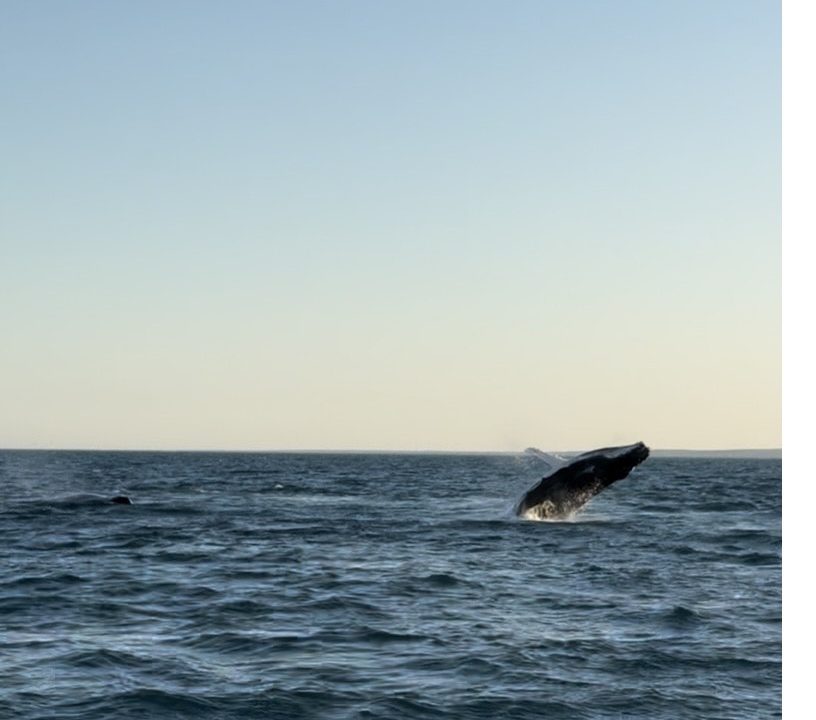Western Australia’s Humpback Whale Migration
Humpback Whales are the majestical gentle giants of the Oceans. In Geographe Bay, near Busselton and Dunsborough, we can enjoy their playful antics, seeking their last point of sanctuary and opportunities to allow the young calves to play and build strength before heading South to Antarctic waters.
Humpback Whales are some of the largest Mammals in the Ocean, weighing up to 40 tones and growing to lengths of up to 16 meters! These blue giants can live up to 50 years old and will begin breeding typically after 5-10 years of ocean exploration. In different areas of the world, Humpbacks will display different behaviours depending on what is favourable in that environment. For example, nursing calves in the Exmouth Gulf or feeding on thousands of krill daily in Antarctica.

The Migration
Humpbacks have an extraordinary distance to cover annually to ensure their survival not only as an individual and as a species. Humpback mothers begin by mating in warmer waters of Exmouth or Broome. The phenomenon of a ‘heat run’ occurs where several males will play survival of the fittest for a particular female’s attention. A group of male whales will essentially chase after the strong female and slowly but surely be worn off until the last male remains. It is not uncommon for several males to be involved in the mating itself due to the complexity of the actual mating process. Attached to the female, there may also be an ‘escort’ which is usually a male, guiding and attempting to protect the female.
Once the female has been impregnated, she will carry her young for approximately 11-12 months before birth. In that time, she will travel back South to Antarctica to feed on krill, ensuring strength for her passage back up the coast in the coming months. Fun fact: The West coast and East coast whales display very similar behaviours and passage plans however do not mix. The same whales travel up and down the East/ West every year!
In May, Mum will carry her unborn Calf to warmer waters in either Broome or Exmouth where she will give birth and nurse her baby. During this time, she may face struggle with larger predators such as Orca attempting to hunt and kill her calf. In 2024 on the Nyinggulu, it was the first time we have recorded Orca calving which, of course, has its pros and cons. Orcas calving shows a very healthy Ecosystem that can support many forms of life. However, also means that as the apex predators of the oceans, they will be praying upon the megafauna, such as sharks and baby Humpbacks which will have an effect on these species overall population.
In 1979, Australia banned whaling which was absolutely amazing and had a huge impact on the populations as a whole. Whales were listed on the endangered species list for quite some time. On the East coast of Australia, it has been estimated that we were down to our last 1,500 Humpbacks and on the West, only 600 remained. Since the ban, we have seen astronomical growth. It is now estimated after the recent census that over 100,000 whales travel up the West coast of Australia annually. Plus, with female whales having a waiting time between birth and becoming pregnant again of only 72 hours, it is believed it could be the same females travelling up and down each year.

Socializing
Geographe Bay is a magical place to experience Humpback whales in their natural environment safely and sustainably.
Humpbacks are highly emotional, intelligent and social creatures. They display several boisterous behaviours and it’s super fun to watch! Geographe Bay provides the perfect environment to host the Humpbacks during their time learning, growing and becoming strong. The bay offers shelter and sanctuary from larger predators they may encounter in the colder Antarctic waters during the summer months.
When it comes to Humpback social skills, they sure know how to show them off. Humpbacks use their massive 40 tonne body to create a commotion. From slapping their tails and pectoral fins to breaching their whole body out of the water, they know how to make a splash. Whales use these techniques to both socialize and clean their bodies free of barnacles! Baby Humpbacks can breach up to 20 times consecutively, only needing 3 strong tail kicks to launch themselves out of the water!
Humpbacks are also massively inquisitive Mammals, they can ‘spy hop’ to check out what’s going on in the surrounding areas. This is when the Whale emerges from the water in a vertical position ‘bobbing’ up and down just above eye level.

Feeding
Throughout the whole migration period, the mothers teach their calves how to survive in the wild. The mother not only doesn’t feed herself, but will feed her baby for the duration. The mother will lose approximately ⅓ of her bodyweight and is definitely ready for some krill in cooler waters!
The mothers Nipple is located underneath her pectoral fins and her milk provides essential nutrients for the survival of a baby whale.
The best places to experience Humpbacks in the South West
The absolute best place to experience these beautiful creatures is up close and personal on the water. If you’re lucky, you can literally make eye contact with them as they spy hop or check out the boat! Our Eco Tour is a magical way to get out on the water and hopefully spot some spirts, tail slaps and breaches. We also have an amazing seal colony, towering limestone cliffs along with pods of local dolphins that love to hang out and say hello!

Written by Meg.
